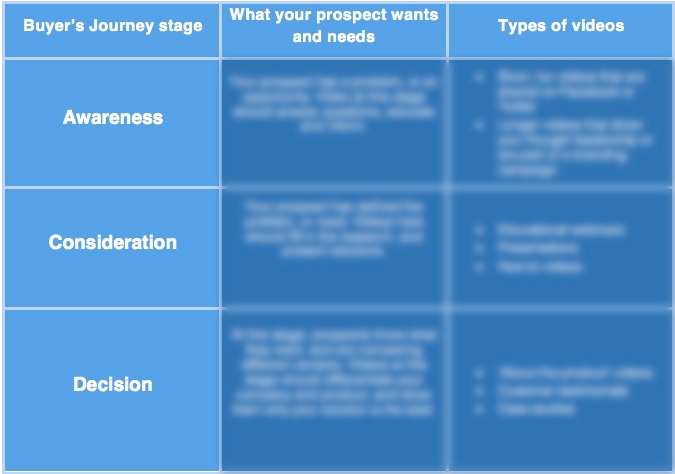Just like the rest of your marketing & sales collateral, using the buyer’s journey as your guide is a great approach to creating video. The buyer’s journey is all about figuring out what information your prospects need, and when they need it. Prospects want different things at each stage in their buyer’s journey:
Awareness – prospects are defining their need, and searching for basic information
Consideration – they’re conducting in-depth research, and building a wide and deep pool of information
Decision – now they’re ready to refine the information, and make a short list of potential vendors
So how do these stages translate into video? Want to take a closer look at this checklist?
 and explore the types of videos that work in each.
and explore the types of videos that work in each.
Getting started with video marketing is not that difficult, says online expert Tom Buyens. You just need to consider your video marketing objectives, and break it down by stage in the buyer’s journey. “To start, consider adding one video per stage,” he suggests.
So for a new product, for example, you might create three videos:
- Awareness Make a short promotional video, no more than 30 seconds, suitable for sharing on social media, and your web pages, announcing your upcoming launch
- Consideration Make a presentation video from a presentation that’s already planned, or host a webinar
- Decision Find an early user of your product, and create a customer testimonial video, post on YouTube and your web pages
According to research conducted by HubSpot, 52% of professional marketers believe video delivers the best return on marketing investment, compared to all other marketing tools. For most marketers, faced with shrinking budgets and the need to do more, with less, this is an important factor. Tom Buyens agrees. “Video offers the best way to create magic about your product and brand, and build trust,” he says. “It’s easier than you think to take advantage of video marketing opportunities.
Want to learn more, and find out how you could add video to your marketing plan? Living Stone can help answer all of your video marketing questions, and support you with everything from developing a strategy to add video to your marketing plan, to video creation. Contact us at info@livingstone.eu




